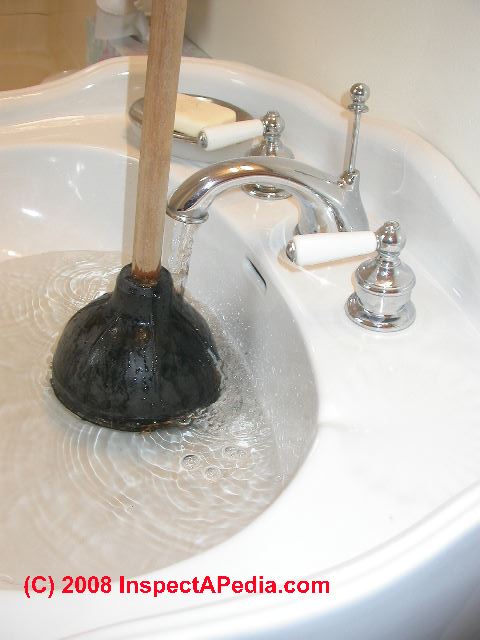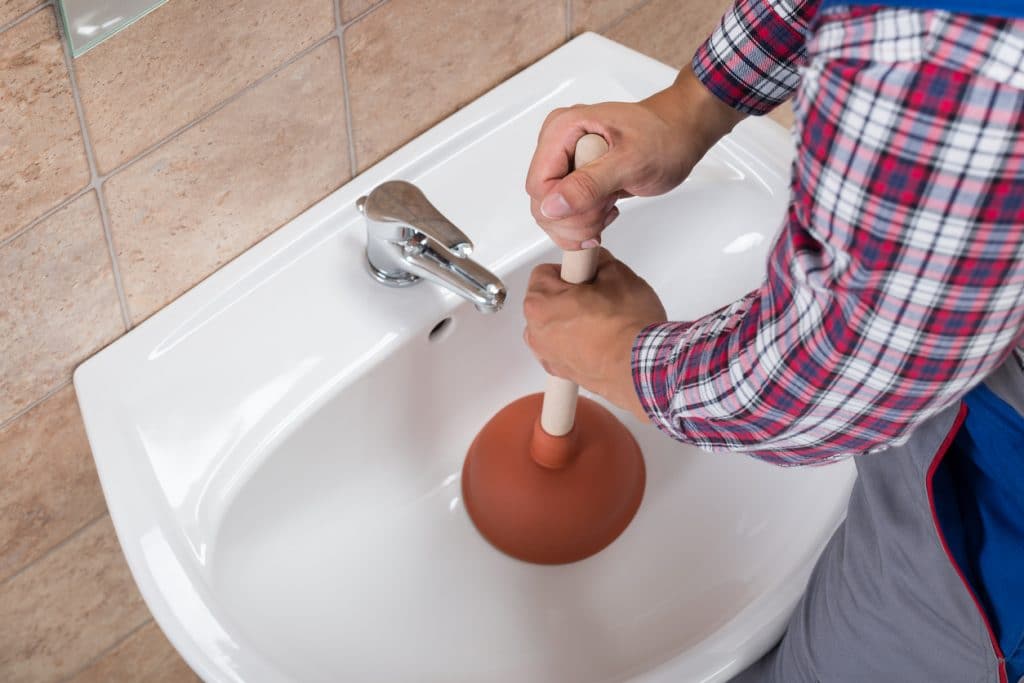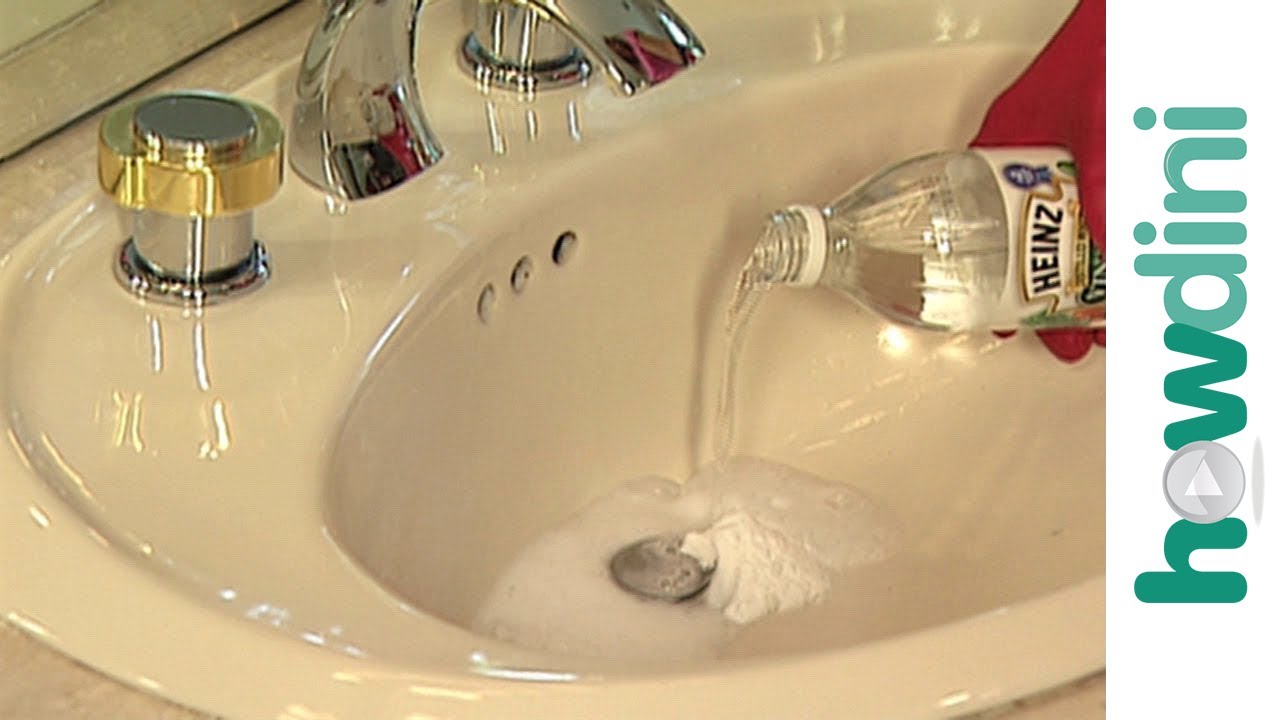Dealing with a clogged bathroom sink drain can be a frustrating and messy experience. Not only does it disrupt your daily routine, but it can also lead to unpleasant odors and unsanitary conditions. If you're facing this issue, don't panic. With a few simple steps, you can unclog your bathroom sink drain and get your plumbing back in working order. To start, gather the necessary tools. You'll need a plunger, a drain snake, a pair of rubber gloves, and a bucket to catch any excess water. It's also helpful to have some baking soda and vinegar on hand for a natural cleaning solution. Next, remove any visible debris from the drain. This can often be the cause of a clog, and removing it can solve the problem quickly. If there is hair or other gunk stuck in the drain, use a pair of pliers or tweezers to pull it out. If the clog is deeper in the pipes, use a plunger to try and dislodge it. Place the plunger over the drain and pump it up and down vigorously. This creates a suction that can help loosen and remove the clog. If the plunger doesn't work, move on to using a drain snake. Unclogging a Bathroom Sink Drain
A slow draining bathroom sink can be just as frustrating as a completely clogged one. If you notice that your sink is taking longer than usual to drain, there are a few simple steps you can take to fix the issue. First, try pouring a pot of boiling water down the drain. This can help break up any build-up that may be causing the slow drain. If this doesn't work, mix equal parts baking soda and vinegar and pour it down the drain. Let it sit for a few minutes before pouring hot water down the drain again. If these methods don't work, you may need to remove the sink stopper and clean it out. Hair and soap scum can often build up around the stopper, causing a slow drain. Unscrew the stopper and clean it thoroughly before reattaching it. How to Fix a Slow Draining Bathroom Sink
If your bathroom sink drain is still clogged, it's time to troubleshoot the issue. There are a few common causes of clogs in bathroom sinks, and knowing the source can help you find the right solution. One common cause is a build-up of hair and soap scum. To prevent this, make sure to regularly clean your sink and use a hair catcher in the drain. Another common cause is a build-up of toothpaste or other dental products. In this case, using a plunger or drain snake can often solve the problem. Sometimes, the clog may be caused by a foreign object, such as a piece of jewelry, that has fallen into the drain. In this case, you may need to use a drain snake or call a professional plumber for assistance. Troubleshooting a Clogged Bathroom Sink Drain
If you prefer to try DIY solutions before calling a professional, there are a few things you can do to unclog a bathroom sink that won't drain. In addition to using a plunger or drain snake, you can try using a mixture of baking soda and vinegar to break up any build-up in the pipes. You can also try using a combination of hot water and dish soap to dissolve grease and grime. Just be sure to use caution and wear gloves when handling any cleaning solutions. If these methods don't work, you can also try using a wet/dry vacuum to suck out the clog. This is a more powerful method, but it may require some extra equipment. DIY Solutions for a Bathroom Sink That Won't Drain
If your bathroom sink is completely blocked and none of the above solutions are working, it may be time to call in a professional. A plumber will have the necessary tools and expertise to clear the blockage and get your sink draining properly again. They may use a more powerful drain snake or even hydro-jetting to remove the clog. Hydro-jetting uses high-pressure water to blast through the pipes and remove any build-up or debris. Keep in mind that a professional solution may be more expensive, but it can save you time and frustration in the long run. Clearing a Blocked Bathroom Sink Drain
If you're dealing with a clogged bathroom sink drain, here are a few tips to keep in mind: 1. Use a plunger or drain snake to try and clear the clog before using harsh chemicals. 2. Regularly clean your sink and use a hair catcher to prevent future clogs. 3. Be cautious when using any cleaning solutions and always wear gloves. 4. If DIY solutions aren't working, don't hesitate to call a professional. Tips for Unclogging a Bathroom Sink Drain
There are a few common causes of a bathroom sink that won't drain properly. These include: 1. Build-up of hair and soap scum. 2. Build-up of toothpaste or other dental products. 3. Foreign objects, such as jewelry, in the drain. 4. Grease and grime build-up. 5. Old or damaged pipes. Common Causes of a Bathroom Sink That Won't Drain
If DIY solutions aren't working, or if you're dealing with a more serious issue, it may be time to call a professional plumber. They will have the necessary tools and expertise to unclog your sink and get your plumbing back in working order. They may also be able to identify and fix any underlying issues, such as damaged pipes, to prevent future clogs. Professional Solutions for a Bathroom Sink That Won't Drain
The best way to deal with a clogged bathroom sink is to prevent it from happening in the first place. Here are a few tips to help prevent clogs: 1. Regularly clean your sink and use a hair catcher to catch any debris. 2. Avoid pouring grease or oil down the drain. 3. Don't use your sink as a garbage disposal for food scraps. 4. Be careful not to drop any foreign objects into the drain. Preventing a Bathroom Sink from Clogging
If you're not sure how to use a plunger to unclog a bathroom sink drain, follow these simple steps: 1. Fill the sink with enough water to cover the plunger. 2. Place the plunger over the drain and pump it up and down vigorously. 3. Continue pumping until the water begins to drain. 4. If the water doesn't drain, try using a drain snake or call a professional plumber. How to Use a Plunger to Unclog a Bathroom Sink Drain
Why Your Bathroom Sink Drain Won't Drain and How to Fix It

The Importance of a Properly Functioning Bathroom Sink Drain
Common Causes of a Clogged Bathroom Sink Drain
 There are several reasons why your bathroom sink drain may become clogged. The most common cause is a buildup of hair, soap scum, and other debris that gets caught in the drain over time. As you use the sink, these substances can accumulate and form a blockage, preventing water from flowing freely. Another common culprit is foreign objects, such as jewelry or small toys, accidentally falling into the sink and getting stuck in the drain. These objects can cause a blockage and prevent water from draining properly.
There are several reasons why your bathroom sink drain may become clogged. The most common cause is a buildup of hair, soap scum, and other debris that gets caught in the drain over time. As you use the sink, these substances can accumulate and form a blockage, preventing water from flowing freely. Another common culprit is foreign objects, such as jewelry or small toys, accidentally falling into the sink and getting stuck in the drain. These objects can cause a blockage and prevent water from draining properly.
How to Fix a Clogged Bathroom Sink Drain
 Fortunately, there are several simple and effective ways to fix a clogged bathroom sink drain. One of the easiest methods is to use a plunger. Place the plunger over the drain and push down and up in quick motions to create suction, which can dislodge the blockage and allow water to flow freely again. Another method is to use a drain snake or auger, a long flexible tool designed to reach deep into the drain and remove any clogs. You can also try using a mixture of baking soda and vinegar, which can help break down and dissolve the debris causing the blockage.
Fortunately, there are several simple and effective ways to fix a clogged bathroom sink drain. One of the easiest methods is to use a plunger. Place the plunger over the drain and push down and up in quick motions to create suction, which can dislodge the blockage and allow water to flow freely again. Another method is to use a drain snake or auger, a long flexible tool designed to reach deep into the drain and remove any clogs. You can also try using a mixture of baking soda and vinegar, which can help break down and dissolve the debris causing the blockage.
Preventing Future Clogs
 To avoid dealing with a clogged bathroom sink drain in the future, there are a few preventative measures you can take. First, install a drain cover to catch any hair or other debris before it goes down the drain. You should also avoid pouring any grease or oil down the sink, as they can solidify and cause clogs. Regularly cleaning your sink and drain with a mixture of hot water and dish soap can also help prevent buildup.
In conclusion, a clogged bathroom sink drain can be a major inconvenience, but with the right knowledge and tools, it can be easily fixed. By understanding the common causes of clogs and taking preventative measures, you can ensure that your bathroom sink drain functions properly and maintains a hygienic environment in your home. If these methods do not work, it may be best to consult a professional plumber for assistance. Remember, a little maintenance goes a long way in keeping your bathroom sink drain running smoothly.
To avoid dealing with a clogged bathroom sink drain in the future, there are a few preventative measures you can take. First, install a drain cover to catch any hair or other debris before it goes down the drain. You should also avoid pouring any grease or oil down the sink, as they can solidify and cause clogs. Regularly cleaning your sink and drain with a mixture of hot water and dish soap can also help prevent buildup.
In conclusion, a clogged bathroom sink drain can be a major inconvenience, but with the right knowledge and tools, it can be easily fixed. By understanding the common causes of clogs and taking preventative measures, you can ensure that your bathroom sink drain functions properly and maintains a hygienic environment in your home. If these methods do not work, it may be best to consult a professional plumber for assistance. Remember, a little maintenance goes a long way in keeping your bathroom sink drain running smoothly.































:max_bytes(150000):strip_icc()/freshen-and-unclog-drain-with-baking-soda-1900466-22-bbf940b70afa4d5abef0c54da23b1d3f.jpg)


























































:max_bytes(150000):strip_icc()/freshen-and-unclog-drain-with-baking-soda-1900466-18-1a5b5da01939471ca8f8823865bd1ce8.jpg)












